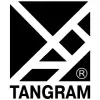
DeFi Platform Creation
$15-25 USD/ ώρα
Ανοικτή
Αναρτήθηκε 2 ημέρες πριν
•
Τελειώνει σε 4 ημέρες
$15-25 USD/ ώρα
I aim to develop a decentralized finance (DeFi) platform.
OVERVIEW
We are building a decentralized financial platform inspired by MakerDAO, aimed at revolutionizing the way users interact with digital assets and DeFi (Decentralized Finance). The platform will offer smart contract-based governance, a stablecoin mechanism, decentralized lending, and borrowing, while enabling decentralized credit systems. The goal is to create a scalable, secure, and innovative DeFi ecosystem where users can participate in governance, earn rewards, and securely manage their digital assets in a decentralized manner.
Key Responsibilities:
Develop smart contracts for decentralized lending, borrowing, and stablecoin minting mechanisms.
Build and maintain decentralized governance modules, allowing users to participate in decision-making processes via tokenized voting.
Design and develop backend services and APIs to interact with smart contracts and blockchain infrastructure.
Integrate front-end applications with blockchain-based systems, ensuring an intuitive and efficient user interface.
Perform security audits and code reviews to ensure the platform is secure and compliant with industry standards.
Implement strategies for scalability, ensuring that the platform can handle growing numbers of users and transactions.
Work in close collaboration with product managers, designers, and other engineers to deliver high-quality software solutions.
Write unit and integration tests to ensure the robustness of the system.
GOALS
Stablecoin Issuance and Management:
Enable the creation, management, and redemption of a decentralized, stable digital currency backed by a basket of collateral assets. The stablecoin should maintain its value against a target asset (e.g., USD) using smart contracts and collateralized debt positions (CDPs).
Decentralized Lending and Borrowing:
Users can lock assets as collateral in smart contracts and borrow the stablecoin (or other digital assets) against them. Users should also be able to repay loans and unlock their collateral without intermediaries.
Governance Mechanism:
Implement a decentralized autonomous organization (DAO) for community governance, allowing token holders to propose and vote on platform upgrades, parameters (like collateralization ratios), and more.
Security & Audits:
Ensure that all smart contracts and platform features are highly secure, with regular audits and formal verification processes.
Scalability:
Develop a platform that can handle millions of transactions, ensuring the infrastructure can scale horizontally and vertically as the user base grows.
User Experience:
Provide a user-friendly interface and experience, simplifying complex blockchain concepts and making decentralized finance accessible to a wide audience.
SPECIFICATIONS
1. Smart Contract Development:
Collateralized Debt Positions (CDPs): Smart contracts will allow users to lock collateral and mint stablecoins against it, similar to MakerDAO's system. These contracts should also handle liquidations in case of under-collateralization.
Stability Mechanism: Implement mechanisms for maintaining the price stability of the stablecoin through over-collateralization, liquidation mechanisms, and possibly governance interventions.
Oracle Integration: Integrate trusted price oracles to fetch real-time data for collateral value assessments and liquidation processes.
Collateral Management: Develop smart contracts for managing various types of collateral (e.g., ETH, BTC, stablecoins, other DeFi assets).
DAO Governance: Develop governance mechanisms based on tokenized voting, with stakeholders being able to vote on parameter adjustments (e.g., collateralization ratio, interest rates) and protocol upgrades.
2. Backend Infrastructure:
Node Infrastructure: Set up and maintain blockchain nodes (Ethereum, Polygon, or other compatible chains).
API Layer: Build RESTful APIs to interact with smart contracts, enabling real-time data retrieval, transaction processing, and event tracking.
Database: Set up a secure database system for storing off-chain data (e.g., transaction history, user balances, collateral status).
3. Frontend Application
Web3 Integration: Ensure the front-end connects seamlessly with Web3 wallets like MetaMask, WalletConnect, etc.
UI/UX Design: Develop an intuitive user interface that provides real-time insights into the user's assets, collateral, loans, and voting power in the governance model.
Transaction Management: Allow users to view and manage their active collateralized loans, repayments, and liquidation risks through a simple and clean interface.
4. Security & Audit:
Security Best Practices: Use best practices in smart contract development to avoid reentrancy attacks, overflow/underflow bugs, and other common vulnerabilities.
Audits: Engage third-party auditors for regular smart contract and platform security audits to ensure the integrity of the system.
5. Scalability and Performance:
Layer 2 Integration: Leverage Layer 2 scaling solutions (e.g., Optimistic Rollups, zk-SNARKs) to ensure lower transaction fees and faster processing.
Transaction Efficiency: Optimize smart contract code for low gas fees and high transaction throughput.
MILESTONES
Phase 1 – Initial Platform Design & Prototyping:
Define the overall architecture, tech stack, and blockchain choice.
Design and prototype the stablecoin, collateral management, and governance modules.
Initial UX/UI wireframes and user flows
Phase 2 – Smart Contract Development & Testing:
Develop smart contracts for CDPs, stablecoin issuance, collateral management, and governance.
Implement unit and integration tests for smart contracts.
Perform security audits and bug fixes.
Phase 3 – Backend & Frontend Development:
Set up and deploy the backend infrastructure, including API services and database management.
Develop frontend interface, ensuring Web3 wallet integration.
Ensure real-time data display for collateralized assets, loans, and governance voting.
Phase 4 – Security Audits & Stress Testing:
Conduct thorough security audits for smart contracts and platform.
Perform stress testing to ensure scalability under heavy loads.
Implement fixes and optimizations based on audit feedback and testing results.
Phase 5 – Beta Launch & User Feedback
Launch a closed beta for early adopters and gather feedback on usability, features, and performance.
Implement user feedback into the platform, iterating on features and user interface.
Phase 6 – Full Public Launch:
Launch the platform to the public, enabling full functionality for lending, borrowing, stablecoin minting, and governance.
Initiate marketing and community engagement campaigns to attract users.
Ταυτότητα εργασίας: 39026572
Σχετικά με την εργασία
78 προτάσεις
Ανοιχτή για προτάσεις
Απομακρυσμένη Εργασία
Ενεργός/ή 1 ημέρα πριν
Δώσε την προσφορά σου
$
USD
Πλεονεκτήματα πλειοδοσίας στο Freelancer
Καθόρισε τον προϋπολογισμό σου και το χρονοδιάγραμμα
Πληρώσου για τη δουλειά σου
Περίγραψε την πρόταση σου
Η εγγραφή και η πλειοδοσία σε εργασίες είναι δωρεάν
78 freelancers δίνουν μια μέση προσφορά $28 USD/ώρα για αυτή τη δουλειά

4,9
(276 αξιολογήσεις)
8,3
8,3

4,9
(68 αξιολογήσεις)
8,5
8,5

4,8
(254 αξιολογήσεις)
8,8
8,8

5,0
(50 αξιολογήσεις)
6,9
6,9

5,0
(32 αξιολογήσεις)
6,5
6,5

5,0
(14 αξιολογήσεις)
6,4
6,4

5,0
(13 αξιολογήσεις)
6,0
6,0

5,0
(7 αξιολογήσεις)
5,6
5,6

5,0
(6 αξιολογήσεις)
5,5
5,5

5,0
(8 αξιολογήσεις)
5,7
5,7

5,0
(7 αξιολογήσεις)
4,8
4,8

4,9
(24 αξιολογήσεις)
5,0
5,0

5,0
(4 αξιολογήσεις)
5,0
5,0

5,0
(13 αξιολογήσεις)
5,0
5,0

5,0
(4 αξιολογήσεις)
4,9
4,9

5,0
(12 αξιολογήσεις)
5,0
5,0

5,0
(2 αξιολογήσεις)
4,5
4,5

5,0
(4 αξιολογήσεις)
4,6
4,6

5,0
(4 αξιολογήσεις)
4,6
4,6

5,0
(8 αξιολογήσεις)
4,0
4,0
Σχετικά με τον πελάτη

Karachi, United States
0,0
0
Επαληθευμένη μέθοδος πληρωμής
Μέλος από Ιαν 24, 2025
Επαλήθευση Πελάτη
Άλλες δουλειές από αυτόν τον πελάτη
$5000-10000 USD
Παρόμοιες εργασίες
$5000-10000 USD
$30-250 AUD
$10-30 AUD
$1500-3000 USD
$15-25 USD/ ώρα
$250-750 USD
$15-25 USD/ ώρα
₹600-1500 INR
₹750-1250 INR/ ώρα
$250-750 USD
$250-750 USD
₹600-1500 INR
$250-500 USD
$750-1500 USD
$30-250 USD
₹600-1500 INR
₹500000-1000000 INR
$30-250 SGD
$15-25 USD/ ώρα
ελάχιστο $50 USD/ ώρα
Ευχαριστούμε! Σου έχουμε στείλει ένα email με ένα σύνδεσμο για να διεκδικήσεις τη δωρεάν πίστωση σου.
Κάτι πήγε στραβά κατά την προσπάθεια αποστολής του email σου. Παρακαλούμε δοκίμασε ξανά.
Φόρτωση προεπισκόπησης
Δόθηκε πρόσβαση για Geolocation.
Η σύνδεση σου έχει λήξει και τώρα έχεις αποσυνδεθεί. Παρακαλούμε συνδέσου ξανά.






























